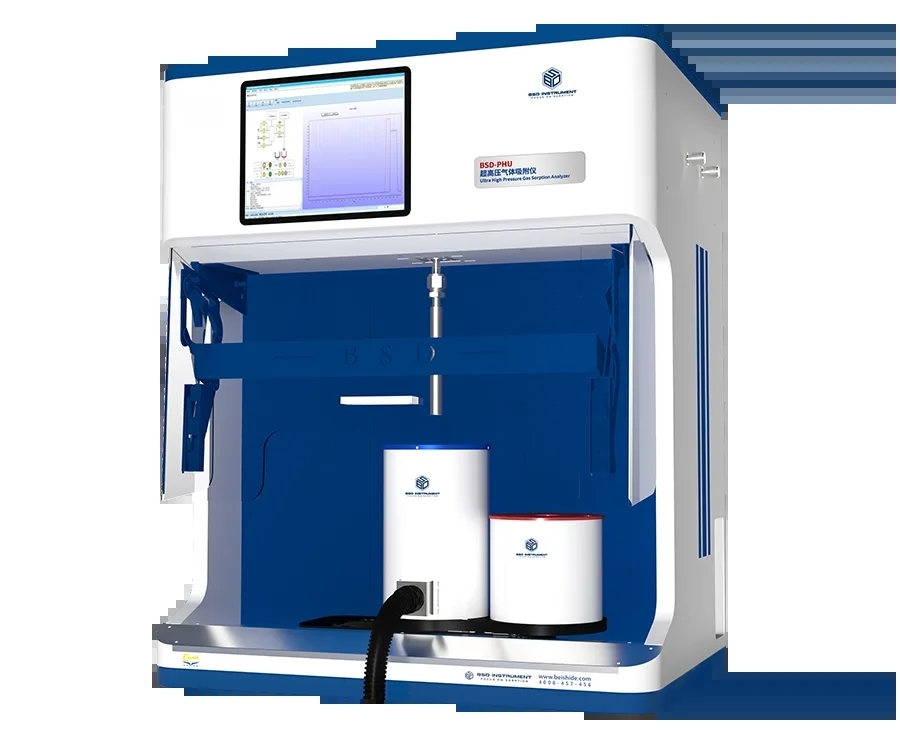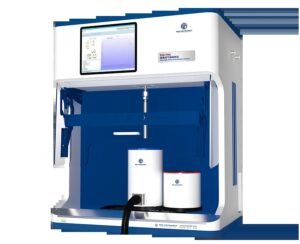Home / Blog / Cyclic Adsorption: Principles, Mechanisms, and Industrial Applications
Cyclic Adsorption: Principles, Mechanisms, and Industrial Applications
15 10 月, 2025From: BSD Instrument


1. Introduction
2. Fundamental Principles of Cyclic Adsorption
2.1 Core Concept
2.2 Key Cycle Steps
Adsorption Phase: The feed stream (containing the target component) flows through the adsorbent bed. The adsorbent selectively captures the target molecules until it reaches saturation or breakthrough (when the effluent concentration exceeds a threshold). Equilibration/Blowdown Phase (optional): For pressure-driven cycles (e.g., PSA), residual gas in the bed is partially vented to reduce pressure before regeneration, improving energy efficiency. Desorption/Regeneration Phase: Conditions are modified (e.g., pressure lowered, temperature raised, or vacuum applied) to weaken adsorbate-adsorbent interactions, releasing the trapped molecules. A purge gas (e.g., inert or recycled stream) may be used to carry away desorbed species. Repressurization Phase (for PSA/VSA): The bed is restored to operating pressure using a portion of the purified product or fresh feed, preparing it for the next adsorption cycle.
3. Mechanisms Governing Cyclic Adsorption
3.1 Adsorption Equilibrium and Kinetics
Equilibrium Capacity: The maximum amount of adsorbate a material can hold under given conditions, described by isotherms (e.g., Langmuir, Freundlich, or Toth models). Selective adsorbents (e.g., zeolites for O₂/N₂ separation, activated carbon for VOCs) are chosen based on their preferential affinity for target components. Kinetic Rate: The speed at which adsorbate molecules diffuse to and bind on the adsorbent surface. Microporous materials (e.g., zeolites) may exhibit slow diffusion, necessitating shorter adsorption cycles to avoid mass transfer limitations.
3.2 Regeneration Mechanisms
Pressure Swing (PSA/VSA): Lowering system pressure reduces the partial pressure of adsorbed species, shifting equilibrium toward desorption. VSA further enhances this by applying vacuum. Temperature Swing (TSA): Heating the bed increases the thermal energy of adsorbate molecules, overcoming adsorption forces. TSA is ideal for strong adsorption (e.g., CO₂ on solid amine sorbents) but requires significant energy input. Electric Swing (ESA): Applying an electric field (e.g., to polarizable adsorbents like activated carbon) induces dipole alignment changes, weakening adsorption. ESA is emerging for high-efficiency CO₂ capture. Purge Gas Assisted: A small flow of inert or reactive gas (e.g., N₂, steam) carries away desorbed molecules, accelerating regeneration.
3.3 Cycle Design Considerations
Working Capacity: The difference between adsorption and desorption loadings, directly impacting yield. Breakthrough Time: The duration before the adsorbent saturates, determining cycle length. Energy Consumption: Regeneration steps (e.g., heating, pressurization) should minimize operational costs. Adsorbent Longevity: Repeated cycling may cause attrition (particle breakdown) or fouling, necessitating robust material selection.
4. Industrial Applications of Cyclic Adsorption
4.1 Gas Separation and Purification
Oxygen/Nitrogen Production (PSA): Zeolite molecular sieves selectively adsorb N₂ (under high pressure) from air, yielding >90% O₂ in the effluent. Cyclic PSA units are compact, energy-efficient alternatives to cryogenic distillation for medical and industrial O₂ supply. Hydrogen Purification (PSA/VSA): PSA systems remove CO, CO₂, and CH₄ from reformer gas streams using activated carbon or zeolites, producing high-purity H₂ (>99.9%) for fuel cells or ammonia synthesis. Volatile Organic Compounds (VOCs) Removal (TSA/PSA): Activated carbon or polymer-based adsorbents capture VOCs (e.g., benzene, toluene) from industrial exhaust, with desorption via steam or hot N₂ for solvent recovery.
4.2 Air Pollution Control
CO₂ Capture (TSA/ESA): Solid sorbents (e.g., metal-organic frameworks, MOFs) or amine-functionalized materials adsorb CO₂ from flue gas during cyclic TSA or ESA processes, offering a low-energy alternative to amine scrubbing for carbon capture and storage (CCS). Mercury and Toxic Gas Removal: Silver-impregnated zeolites or activated carbon cyclically adsorb Hg⁰ or H₂S from coal-fired power plant emissions, protecting public health and ecosystems.
4.3 Liquid-Phase Separations
Water Treatment (TSA/PSA): Ion-exchange resins or activated carbon cyclically remove heavy metals (e.g., Pb²⁺, Cd²⁺) or organic pollutants (e.g., pesticides) from wastewater, with regeneration via acid/base washes or solvent elution. Pharmaceutical and Food Industry: Cyclic adsorption purifies solvents (e.g., ethanol dehydration using molecular sieves) or isolates active ingredients (e.g., separation of chiral compounds).
4.4 Energy Applications
Natural Gas Sweetening (PSA): Acid gases (H₂S, CO₂) are removed from methane-rich streams using PSA systems, ensuring pipeline-quality gas. Fuel Cell Feed Preparation (PSA): Cyclic adsorption upgrades biogas or digester gas by removing CO₂ and H₂S, producing clean CH₄ for fuel cells.
5. Challenges and Future Directions
Material Limitations: Adsorbents with higher selectivity, faster kinetics, and greater stability under harsh conditions (e.g., high temperature/pressure) are needed. Process Intensification: Miniaturization and integration with renewable energy sources (e.g., solar-heated TSA) could enhance efficiency and sustainability. Digital Optimization: Advanced modeling (e.g., machine learning for cycle parameter prediction) and real-time monitoring (e.g., sensors for bed saturation) can improve control and reduce energy waste.
6. Conclusion
Our Latest Blog & Articles
Stay updated with our latest news. Discover new product launches, innovative technologies, and upcoming events. Join our community and stay informed about all things lab equipment.
-
27 10 月, 2025
Cheap and Efficient Adsorption-Desorption Systems for Water Pollution Control in China
-
25 10 月, 2025
Gas Adsorption Analyzer Technologies: Advancements and Future Trends
-
23 10 月, 2025
Micropore and Mesopore Analysis for Improving Gas Storage and Separation Efficiency
-
20 10 月, 2025
Membrane Porosity and Its Impact on Mass Transport and Permeation Efficiency




